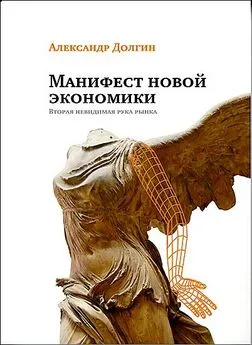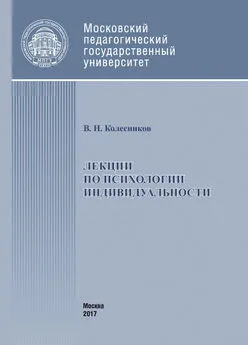Тодд Роуз - Долой среднее! [Новый манифест индивидуальности]
- Название:Долой среднее! [Новый манифест индивидуальности]
- Автор:
- Жанр:
- Издательство:Манн, Иванов и Фербер
- Год:2017
- ISBN:9785001008934
- Рейтинг:
- Избранное:Добавить в избранное
-
Отзывы:
-
Ваша оценка:
Тодд Роуз - Долой среднее! [Новый манифест индивидуальности] краткое содержание
Долой среднее! [Новый манифест индивидуальности] - читать онлайн бесплатно полную версию (весь текст целиком)
Интервал:
Закладка:
183
Francis Galton, “Mental Tests and Measurements,” Mind 15, no. 59 (1890): 373–381.
184
Биографические данные см. в работе W. B. Pillsbury, Biographical Memoir of James McKeen Cattell 1860–1944 (Washington, DC: National Academy of the Sciences, 1947); and M. M. Sokal, “Science and James McKeen Cattell, 1894–1945,” Science 209, no. 4452 (1980): 43–52.
185
James McKeen Cattell and Francis Galton, “Mental Tests and Measurements,” Mind 13 (1890): 37–51; and James McKeen Cattell and Livingstone Farrand, “Physical and Mental Measurements of the Students of Columbia University,” Psychological Review 3, no. 6 (1896): 618. Also see Michael M. Sokal, “James McKeen Cattell and Mental Anthropometry: Nineteenth-Century Science and Reform and the Origins of Psychological Testing,” in Psychological Testing and American Society, 1890–1930, ed. Michael Sokal (New Brunswick: Rutgers University Press, 1987).
186
Результаты были проанализированы и опубликованы в докторской диссертации ученика Кеттелла Клара Висслера. См. Clark Wissler, “The Correlation of Mental and Physical Tests,” Psychological Review: Monograph Supplements 3, no. 6 (1901): i.
187
Wissler, “Correlation of Mental and Physical Tests,” i
188
Charles Spearman, “ ‘General Intelligence,’ Objectively Determined and Measured,” American Journal of Psychology 15, no. 2 (1904): 201–292.
189
Ознакомиться с великолепным исследованием, которое доказывает не только наличие неоднородности в личности, но и разный уровень неоднородности у людей, можно в работе C. L. Hull, “Variability in Amount of Different Traits Possessed by the Individual,” Journal of Educational Psychology 18, no. 2 (February 1, 1927): 97–106. Более современное исследование: Laurence M. Binder et al., “To Err Is Human: ‘Abnormal’ Neuropsychological Scores and Variability Are Common in Healthy Adults,” Archives of Clinical Neuropsychology 24, no. 1 (2009): 31–46.
190
G. C. Cleeton, and Frederick B. Knight, “Validity of Character Judgments Based on External Criteria,” Journal of Applied Psychology 8, no. 2 (1924): 215.
191
Обсуждение исследований Торндайка см. в книге его сына Robert L. Thorndike and Elizabeth Hagen, Ten Thousand Careers (New York: John Wiley & Sons, 1959). Примечание: любому читателю, знакомому со взглядами Торндайка, покажется странным, что ученому приписали одномерный взгляд на интеллект, в то время как он доказывал, что интеллект многомерное явление (абстрактное, социальное и инженерное мышление), и был одним из самых ярых критиков идей Спирмана. Тем не менее он действительно считал, что способности к учебе зависят от некоего врожденного свойства, которое связано с умением мозга создавать связи.
192
David Wechsler, Wechsler Adult Intelligence Scale — Fourth Edition (WAIS — IV) (San Antonio, TX: NCS Pearson, 2008).
193
Wayne Silverman et al., “Stanford-Binet and WAIS IQ Differences and Their Implications for Adults with Intellectual Disability (aka Mental Retardation),” Intelligence 38, no. 2 (2010): 242–248.
194
Это распространяется на все характеристики, которые мы, как правило, измеряем. См. Hull, “Variability in Amount of Different Traits,” 97–106.
195
Jerome M. Sattler and Joseph J. Ryan, Assessment with the WAIS — IV (La Mesa, CA: Jerome M. Sattler Publisher, 2009). Дополнительно о неотъемлемости такого качества интеллекта, как неоднородность, см. Adam Hampshire et al., “Fractionating Human Intelligence,” Neuron, December 10 (2012): 1–13.
196
Sergio Della Sala et al., “Pattern Span: A Tool for Unwelding Visuo-Spatial Memory,” Neuropsychologia 37, no. 10 (1999): 1189–1199.
197
Jennifer L. Kobrin et al., Validity of the SAT for Predicting First-Year College Grade Point Average (New York: College Board, 2008).
198
Steve Jost, “Linear Correlation,” course document, IT 223, DePaul University, 2010, http://condor.depaul.edu/sjost/it223/documents/correlation.htm.
199
Todd Carlisle, interviewed by Todd Rose, April 21, 2015.
200
Carlisle, interview, 2015.
201
Todd Carlisle, interview, 2015; also see Saul Hansell, “Google Answer to Filling Jobs Is an Algorithm,” New York Times, January 3, 2007, http://www.nytimes.com/2007/01/03/technology/03google.html?pagewanted=1&_r=2& for similar insights about Todd Carlisle’s thinking, approach, and results, see Anders, Rare Find.
202
Carlisle, interview, 2015.
203
Carlisle, interview, 2015. See also Saul Hansell, “Google Answer to Filling Jobs Is an Algorithm,” New York Times, January 3, 2007, http://www.nytimes.com/2007/01/03/technology/03google.html?pagewanted=2&_r=0.
204
Данные о персонале взяты из “Google,” Wikipedia, June 19, 2015, http://en.wikipedia.org/wiki/Google; and “IGN,” Wikipedia, June 13, 2015, http://en.wikipedia.org/wiki/IGN. Данные о ежегодном уровне продаж взяты из “Google,” Forbes, http://www.forbes.com/companies/google/; and “j2 Global,” Forbes, http://www.forbes.com/companies/j2-global/), данные по IGN приведены по данным компании-учредителя, j2 Global.
205
E. B. Boyd, “Silicon Valley’s New Hiring Strategy,” Fast Company, October 20, 2011, http://www.fastcompany.com/1784737/silicon-valleys-new-hiring-strategy.
206
http://www.ign.com/code-foo/2015/.
207
Boyd, “Silicon Valley.”
208
Boyd, “Silicon Valley.”
209
“GRE,” ETS, http://www.ets.org/gre.
210
Francis Galton, “Measurement of Character,” reprinted in Fortnightly Review 42 (1884): 180.
211
L. Rowell Huesmann and Laramie D. Taylor, “The Role of Media Violence in Violent Behavior,” Annual Review of Public Health 27 (2006): 393–415. For an overview of the situationist perspective see Lee Ross and Richard E. Nisbett, The Person and the Situation: Perspectives of Social Psychology (London: Pinter & Martin Publishers, 2011).
212
Quetelet, Sur l’homme (1942) 108 (English edition).
213
Stanley Milgram, “Behavioral Study of Obedience,” Journal of Abnormal and Social Psychology 67, no. 4 (1963): 371.
214
Milgram, “Behavioral Study of Obedience.”
215
Douglas T. Kenrick and David C. Funder, “Profiting from Controversy: Lessons from the Person-Situation Debate,” American Psychologist 43, no. 1 (1988): 23.
216
“Understanding the Personality Test Industry,” Psychometric Success, http://www.psychometric-success.com/personality-tests/personality-tests-understanding-industry.htm; Lauren Weber, “Today’s Personality Tests Raise the Bar for Job Seekers,” Wall Street Journal, April 14, 2015, http://www.wsj.com/articles/a-personality-test-could-stand-in-the-way-of-your-next-job-1429065001.
217
Drake Baer, “Why the Myers-Briggs Personality Test Is Misleading, Inaccurate, and Unscientific,” Business Insider, June 18, 2014, http://www.businessinsider.com/myers-briggs-personality-test-is-misleading-2014–6; and Lillian Cunningham, “Myers-Briggs: Does It Pay to Know Your Type?” Washington Post, December 14, 2012, http://www.washingtonpost.com/national/on-leadership/myers-briggs-does-it-pay-to-know-your-type/2012/12/14/eaed51ae–3fcc–11e2-bca3-aadc9b7e29c5_story.html.
218
Salesforce.com, “How to Use the Enneagram in Hiring Without Using a Candidate’s Enneatype,” The Enneagram in Business, October 25, 2012, http://theenneagraminbusiness.com/organizations/salesforce-com-how-to-use-the-enneagram-in-hiring-without-using-a-candidates-enneatype/.
219
Lawrence W. Barsalou et al., “On the Vices of Nominalization and the Virtues of Contextualizing,” in The Mind in Context, ed. Batja Mesquita et al. (New York: Guilford Press, 2010), 334–360; Susan A. Gelman, The Essential Child: Origins of Essentialism in Everyday Thought (Oxford: Oxford University Press, 2003); David L. Hull, “The Effect of Essentialism on Taxonomy — Two Thousand Years of Stasis (I),” British Journal for the Philosophy of Science (1965): 314–326; and Douglas L. Medin and Andrew Ortony, “Psychological Essentialism,” Similarity and Analogical Reasoning 179 (1989): 195.
220
John Tierney, “Hitting It Off, Thanks to Algorithms of Love,” New York Times, January 29, 2008, http://www.nytimes.com/2008/01/29/science/29tier.html?_r=0; and “28 Dimensions of Compatibility,” http://www.eharmony.com/why/dating-relationship-compatibility/.
221
J. McV. Hunt, “Traditional Personality Theory in Light of Recent Evidence,” American Scientist 53, no. 1 (1965): 80–96. Walter Mischel, “Continuity and Change in Personality,” American Psychologist 24, no. 11 (1969): 1012; and Walter Mischel, Personality and Assessment (New York: Psychology Press, 2013).
222
Erik E. Noftle and Richard W. Robins, “Personality Predictors of Academic Outcomes: Big Five Correlates of GPA and SAT Scores,” Journal of Personality and Social Psychology 93, no. 1 (2007): 116; and Ashley S. Holland and Glenn I. Roisman, “Big Five Personality Traits and Relationship Quality: Self-Reported, Observational, and Physiological Evidence,” Journal of Social and Personal Relationships 25, no. 5 (2008): 811–829.
223
“Yuichi Shoda, Ph.D.,” University of Washington Psychology Department Directory, http://www.psych.uw.edu/psych.php?p=358&person_id=2569.
224
Yuichi Shoda, interviewed by Todd Rose, November 19, 2014.
225
Shoda, interview, 2014.
226
“Research,” Wediko Children’s Services, http://www.wediko.org/research.html.
227
Yuichi Shoda et al., “Intraindividual Stability in the Organization and Patterning of Behavior: Incorporating Psychological Situations into the Idiographic Analysis of Personality,” Journal of Personality and Social Psychology 67, no. 4 (1994): 674.
Читать дальшеИнтервал:
Закладка:
![Обложка книги Тодд Роуз - Долой среднее! [Новый манифест индивидуальности]](/books/1087260/todd-rouz-doloj-srednee-novyj-manifest-individua.webp)








